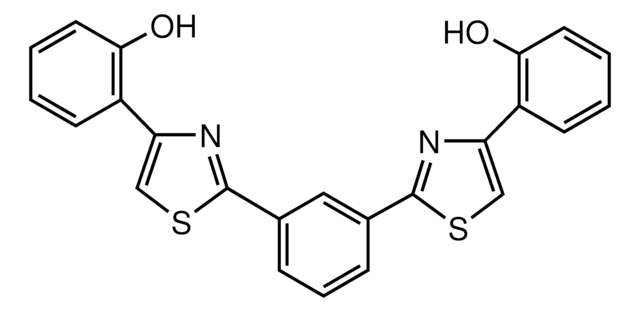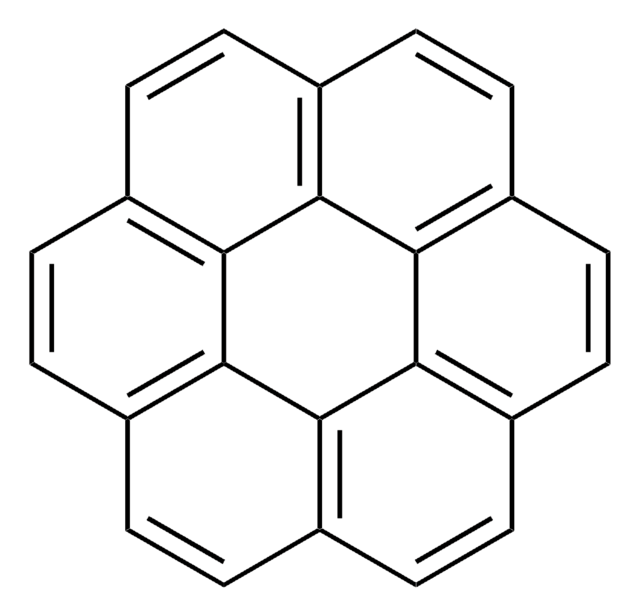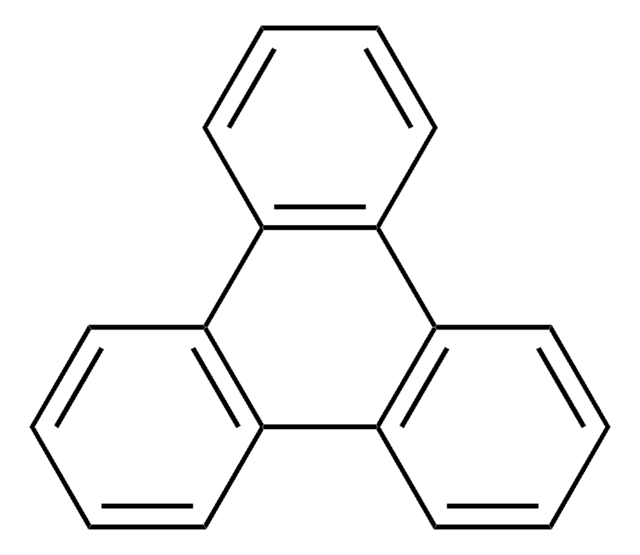推荐产品
等級
certified reference material
agency
BCR®
製造商/商標名
JRC
技術
HPLC: suitable
gas chromatography (GC): suitable
應用
environmental
pharmaceutical (small molecule)
形式
neat
儲存溫度
room temp
SMILES 字串
c1ccc2c(c1)ccc3c2ccc4c5ccccc5ccc34
InChI
1S/C22H14/c1-3-7-17-15(5-1)9-11-21-19(17)13-14-20-18-8-4-2-6-16(18)10-12-22(20)21/h1-14H
InChI 密鑰
GBROPGWFBFCKAG-UHFFFAOYSA-N
分析報告
For more information please see:
BCR168
BCR168
法律資訊
BCR is a registered trademark of European Commission
訊號詞
Warning
危險聲明
危險分類
Carc. 2
儲存類別代碼
11 - Combustible Solids
水污染物質分類(WGK)
WGK 3
閃點(°F)
Not applicable
閃點(°C)
Not applicable
Alberto Girlando et al.
Physical chemistry chemical physics : PCCP, 14(5), 1694-1699 (2011-12-24)
The paper reports a complete analysis of the phonon structure of crystalline picene, a recently announced organic semiconductor. Both lattice and intramolecular vibrations are investigated. An exhaustive assignment of lattice phonons is obtained through polarized Raman spectra assisted by lattice
K L Platt et al.
Chemico-biological interactions, 66(3-4), 157-175 (1988-01-01)
Picene, a polycyclic aromatic hydrocarbon (PAH) of environmental relevance has recently been predicted to be carcinogenic, based on quantum mechanical calculation, although in several animal studies no carcinogenicity could be detected. In order to find out if the metabolism of
K L Platt et al.
Carcinogenesis, 11(10), 1721-1726 (1990-10-01)
The carcinogenic activity of the two polycyclic aromatic hydrocarbons (PAHs), picene (benzo[a]chrysene) and dibenz[a,h]anthracene (DBA), was determined in NMRI mice by five different experimental protocols in order to find out if picene is a carcinogen as predicted by recent quantum
Andrew P Rutter et al.
Environmental science & technology, 43(20), 7770-7777 (2009-11-20)
Carbonaceous atmospheric particulate matter (PM25) collected in the midwestern United States revealed that soot emissions from incomplete coal combustion were important sources of several organic molecular markers used in source apportionment studies. Despite not constituting a major source of organic
F J Zhang et al.
The Journal of organic chemistry, 65(13), 3952-3960 (2000-06-24)
A new synthetic approach to polycyclic aromatic compounds is described that entails in the key steps double Suzuki coupling of PAH bisboronic acid derivatives with o-bromoaryl aldehydes to furnish aryl dialdehydes that are converted to larger polycyclic aromatic ring systems
我们的科学家团队拥有各种研究领域经验,包括生命科学、材料科学、化学合成、色谱、分析及许多其他领域.
联系技术服务部门








